Opinion by Wallace Wyss
All photos courtesy of Gooding & Company Auctions.
We are still reeling from the prices achieved at Scottsdale auctions. For example, $737,000 for a mere 330GTC is mind-numbing. It is about three times what GTCs usually get at auctions.
Other mind-numbing numbers at the Gooding auction were:
250 California LWB Spider – $8.25M
F50 – $1.450M
246GTS – $506k
250GT Boano low roof $836K
330GT 2+2 $250K
Another surprise was the high bidding on the 246GTS, but does it make sense that a Ferrari without a V-12 that originally sold as a budget Ferrari, is worth more than many V-12 Ferraris?
At the RM auction it was much the same as far as Ferraris:
1960 Ferrari 250 GT SWB Berlinetta ‘Competizione’ – $8,140,000
1967 Ferrari 275 GTB/4 – $1,842,500
1966 Ferrari 275 GTB – $1,320,000
2003 Ferrari Enzo – $1,320,000
1954 Ferrari 250 Europa Coupe – $1,017,500
This observer has a few observations but none of them really explain the phenonema of the high prices at Scottsdale 2013.
1. There are more and more investors coming into the field who know nothing about Ferraris but are told by knowledgeable friends that there is a limited supply of the great ones and want to get in no matter how much the price. The theory is that as ever more people join the crowd, prices will continue to rise.
2. There are a number of toney events such as the Colorado Grand that you can only enter if you have a truly significant car. You can have a brand new Ferrari and maybe not get accepted but if you have a 40-year old one like one of these, you could be accepted and be wining, dining and driving with some very high rollers and business people you would not otherwise meet. Think of the price of the car as buying an membership in the Bel Air Country Club.
3. The Mid-East has awakened to the prestige and marketing possibilities of a concours with one recently held in Dubai, and possibly the UAE. Some oil sheiks make $100 million a week so to buy a few significant cars puts them on talking terms with elite business folk around the world. They can always sell them if they get bored.
4. Art is a bad investment in terms of how easily famous artists are faked. I had lunch with an art dealer who faked Picassos using real blank pieces of paper signed by Picasso. Warhols are faked regularly, and even the Warhol family can’t always identify fakes from the real prints. On the other hand, though it can be and is done, a Ferrari California Spyder is not easy to fake from the ground up.
5. Diamonds are a bad investment. Russia has so many bags of diamonds in storage that, if they released them all at once, you could put them in boxes of breakfast cereal as premiums. Gold is too volatile.
6. High profile celebrities are collecting them. Letterman has at least three Ferraris including a Superamerica. Leno is said to be anti-Ferrari but must have at least one. If he ever goes whole-hog on them, he could spend $10 million on his first shopping trip if he unloads some of his pre-war classics. Ralph Lauren, among celebrities has shown the tasteful way to own Ferraris , using them in promotional ways that respect them as objects d’art (such as displaying his 250LM, GTO and others at the Louvre in Paris).
7. Ferrari is expanding into new markets where there are billionaires who have no background in the marque. Maybe they will buy a brand new one and find out later that the real connoisseurs also have old ones, vintage ones and decide to pick up a couple of those as well. The Concorso d’Kremlin is not far off…
8. Some say this is a “bubble,” like the Tulip bulb thing in Holland. They will go up so high and then collapse. I think not – because you can always grow more tulips – but you can’t go back to 1963 and build more 250GT0s. Then again, the art and car market crash of the 1990s is now apparently long forgotten. This means short memories and youth may contribute to high auction prices.
Of course if there is a major stock market crash, North Korea invades South Korea, Israel launches a missile at Iran, etc. all bets are off. However, I think we are witnessing Ferraris made before 1975 displacing fine art as collectibles. Scottsdale 2013 was a tipping point and the market has changed forever.
————————-
THE AUTHOR: Wallace Wyss is currently beating the bushes for a producer for his Ferrari Hunters mystery novels.
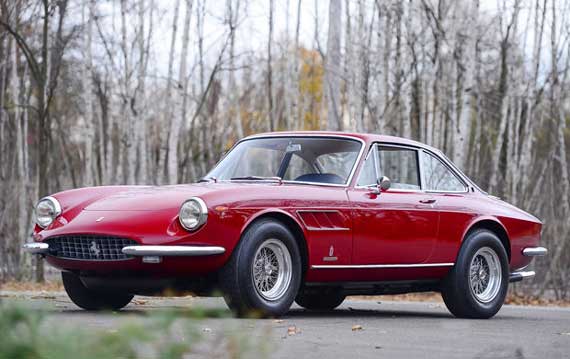
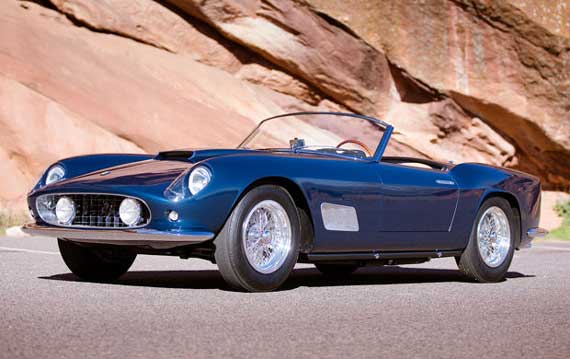
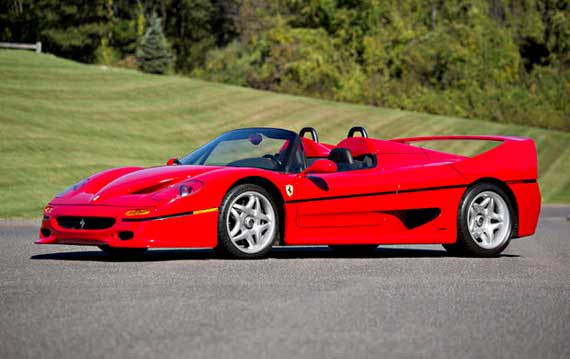
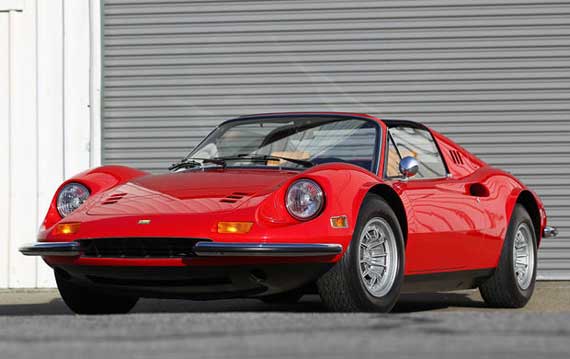
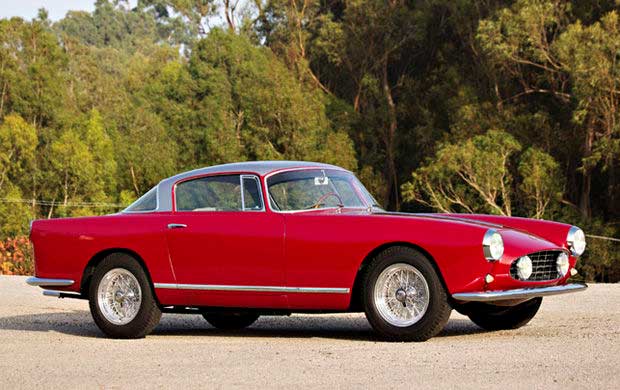
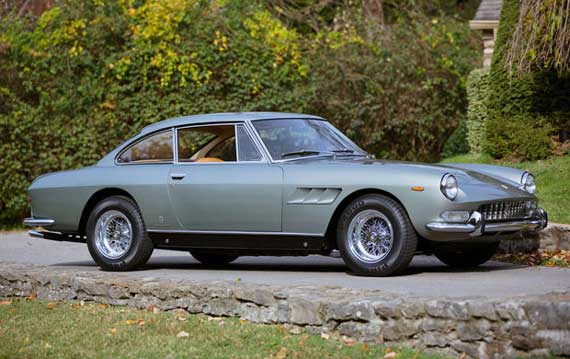

Ok, I totally get the Ferrari thing. But Scottsdale also saw the sale of the fabulous barn-find Lancia Aurelia Spider America for $803,000, so this article should have been titled “The Significance of Scottsdale Vis-à-vis Lancias.”
The author mentions at the end of the article the crash of the 1990’s – we’ve been here before. Back then, the thinking was that prices might plateau but wouldn’t drop. Wrong!
As an enthusiast that once dreamt of owning a V-12 2+2 or, perhaps, a 250 Europa, those dreams have faded. I’m now looking at Alfa’s.
Should have kept that 1960 300 SL Roadster I sold 25 years ago. Did you see those auction prices?!
Nice article and yes the old Ferraris are through the roof.
You have to think ahead on these things.
Testarossas are still available at $55,000+
412s with V12 are bargains even though they are mostly automatics and the design is superb. One just this month didn’t sell after $20,000+ was bid at notable auction.
For us non-healed bargain required buyers it might be time to look ahead at the rest of the boats to see what the tide is raising!?
I wrote a separate story on the Lancia which may come up soon. The story there was: dirt is in!
True there were other cars at Scottsdale but I was only writing about the Italian cars. If you wanna cry the blues aobut valuable cars sold too cheap, let me tell you about the gullwing I sold for $2500 (that was a long, long time ago….)
Or the pre 356 Porsche I sold in 1965 for $500 or the almost concours DB5 I sold in 1985 for $15000.
That “fair market price” is experiencing a bubble for desirable luxury items is simply indicative of the buying power of the so-called 1%. Once it was Faberge eggs, now it’s Ferraris and anything else that can be considered exclusive. As a non 1 percenter who nonetheless appreciates fine vintage sports cars for their engineering and beauty, I see my potential choices being relentlessly winnowed down by the reckless bidding of the Paris Hiltons of my day. I suppose I should choose a less popular passion.
A very interesting commentary. You name eight of reasons why prices of Ferrari’s and other exclusive and collectable cars are skyrocketing. Don’t you think that ‘quantitative easing’ by the Fed and pouring a lot of money in some doubtful PIGS economies of the Euro zone has also something to do with it. I make no judgment on the political or economic motives for these interventions. But I believe that the fear of inflation and/or the financial collapse of some highly indebted states and the resulting crash of the bond markets, will draw very wealthy people to invest part of their capital in anything that is unique or irreplaceable and thus will retain its value. As a sort of safe heaven! However, lets be honest; there are worse ways to spend your money than by buying a Ferrari. At least if you can afford it…..
Thank for the article, Gijsbert-Paul Berk, France
Interesting, but sad. Too expensive to really drive as they were meant to do. On the other hand if they were too cheap, they would get wrecked or poorly modified too often. They are however, great works of art!
Mr. Wyss is mostly right in all his arguments. Ferraris and similar limited-production jewels-on-wheels from the 1950s and 1960s will forever go up in value (long term) because their numbers are small and such cars can never be replicated. Same thing with a Van Gogh or a Picasso, but you cannot DRIVE those to a cocktail party on a private gold course and show off to hundreds of wealthy people without, er, seeming to. Only criticism: what about great American cars with Italian flair? The Chrysler Diablo went for $1.35 million. Article coming here on its sister car, the Dual-Ghia 400, very soon.
What we are seeing is the theory of “the greater idiot.” A lot of these buyers are hoping someone will make as foolish a mistake as they did.
It’s definitely got a frothy quality to it. But I have doubts about some of the arguments.
#4, for one, makes no sense. Not if you’re speaking of serious art investors. The art market has recently rebounded strongly; and by that I’m talking about the high-end paintings, where fakes simply aren’t a real issue–not the Rodeo Drive “fine art prints” signed posthumously by Salvador Dali.
And I suspect there’s one important factor missing. Bank/CD/T-Bill interest rates are dismal. So a number of people with a lot of cash are looking for other places to park it. And more and more these days, that involves converting it to things they can actually park.
The cars shown in the article have to be driven to be appreciated,what price the insurance?I know they are investments but will you get your money back say in10 years time with the car stored away meantime with no proper road work to keep it in good working order?
The bubble can burst at any time.
Philippe’s comment about the differance between buying a classic car as an investment as opposed to art, etc. is that it can be used as a P.R. tool on occasion. Recently when I was pitching a novel about Ferraris to some TV producers, I called up a fellow in Malibu with a 275GTS and invited him for lunch with myself and the producers. Lunch was preceded with a brisk 15 minute drive through the Malibu countryside for one of the producers as passenger in the 275. I have to believe going through the Malibu tunnel at 7000 rpm in third gear in an open Ferrari made the occasion more memorable for him so when he hears the word “Ferrari” he connects it with something. When you have an interesting car, you can entertain people with it which is difficult to do with other investments (I would say boats, but don’t know of any boats that go up in value with age except maybe Rivas).
Terrific article. Numerous cheap, non red, ferrari 308 GTS, 1977-1985 actually selling for less than $20,000.. MANY 1988- 2007 HIGH COST to OPERATE FERRARIS will SELL for LESS THAN $40,000 in 7 years. TIDE has owned and vintage races 14 ferraris from 1973-2007. [ 340A, 225S, 250pf [3], 250 LWB, 250 SWB, 250 LWB calif, 275 gtb [2] 365gtc4, 330 gtc zagatto, 512BBLM #31589, we are last ferrari racing team / car owner to win class and finish in top 5 at LeMans! TIDE pozzi ferrari france, 5th.O.A. IMSA class winner. P.S. DROVE MY THREE DAYTONA SPIDERS OVER 250,000 MILES WITH NO PROBLEMS FROM 1973-1986. Ser #17071 silver,red drove 205,000+ miles, Ser # 14395 ugly brown,tan drove 36,00+ miles, Ser.# 14737 evil knevil’s dog! 25,000 + all now show less than 50,000 miles on odometer and are resale red. google tom davis tide ferrari palm beach for additional info or http://www.pbtideyachts@aol.com. Last year for Sebring 12 Hours Classic race, NASCAR, not so Grand Am / ALMS dumming down sportscar racing.
The huge run-up in price recently could be due to the 1% being aware that the gigantic deficit spending in America, and the associated money-printing, must inevitably lead to high inflation: too many dollars chasing the same quantity of goods is the classic definition of inflation. If you see that coming, buy something inflation-proof. Gold, silver are the usual targets. But high-priced art is also limited in quantity, and Ferraris are at the top of that list – very high, recognized quality, and very limited quantity. Probably more fun to own, too, compared to silver dollars